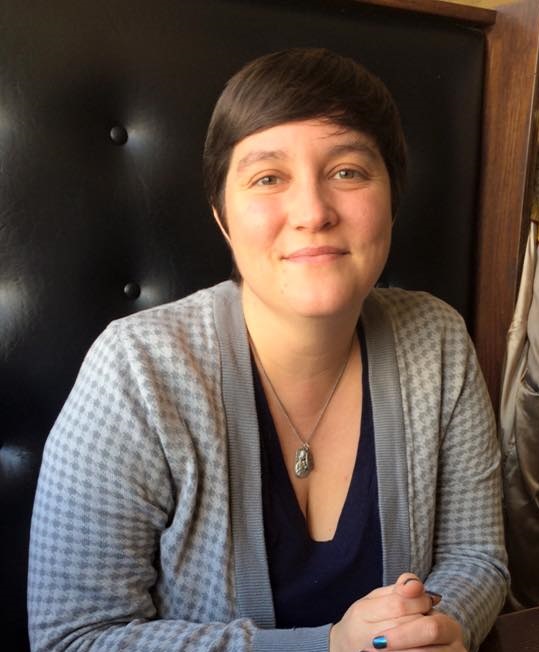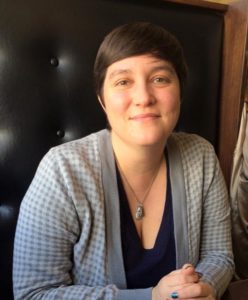This is How the Holy Family Came About

This Advent, The Table has featured weekly reflections from Deacon Christine Haider-Winnett, RCWP, based on the liturgical readings for that week. This week’s readings can be found here. Homilies and reflections on The Table are part of a new “Preaching Equality” series from WOC.
“This is how the birth of Jesus Christ came about,” says Matthew, as he begins to tell a complex story of Joseph’s feelings of betrayal, his uncertainty about whether to carry on with his engagement, and an elaborate dream that eventually solves this dilemma for him.
Unlike in Luke, which follows Jesus’ nativity through the eyes of Mary, Matthew barely seems concerned with her other than as a device used to help Joseph recognize the birth of Christ. The lack of Mary’s perspective in this text has always bothered me, and it bothers me even more this year as I am in the third trimester of my own pregnancy. As I deal with back aches and fatigue and an inability to successfully sleep through the night, I want to scream at Matthew “That is certainly NOT how the birth of Jesus Christ came about!”
And yet, there’s something that draws me to this text, as a pregnant woman who is watching her spouse walk through this pregnancy in such a different way than I am. In the thirteen years we’ve spent together we moved across the country twice, started graduate school, began our careers and dealt with the loss of family members. But never before has it felt like we were going through an experience together, and yet also entirely alone. No matter how hard I try to describe it, it’s impossible for Alex to understand the ways hormone changes and this increasingly large creature inside of me has changed every moment of my daily life, and it’s impossible for me to understand how powerless and outside this experience he can feel.
Even if Matthew’s description of “how the birth of Jesus Christ came about” seems painfully one-sided, I’m grateful for a window into how it came about for Joseph. When I was writing this piece, I asked my husband, a divinity student preparing for Unitarian Universalist ministry, what he thought of this story. He was struck by how much it mirrored the Annunciation. Like Mary, Joseph was offered a choice to participate in this weird, nontraditional and scandalous family. Like Mary, he was filled with doubt but in the end decided to follow God’s will, even though stood in stark contrast to what he’d been taught to believe “proper” families were supposed to look like. He stepped into a fathering role that was much more complicated than he’d probably envisioned for himself and worked with Mary to create a new kind of family—one they didn’t have any kind of mold for.
When Alex and I discussed the reading, we were struck by how much we saw Joseph in friends and loved ones that we had seen care for their own families: step-parents, same-sex parents, adoptive parents and single parents that had stepped up to provide care and stability for children even when it fell outside the norm of what family was “supposed” to look like. Like the Holy Family, they often had to create their own models of family, discovering that previous models hadn’t been created with them in mind.
Matthew’s story may not be “how the birth of Jesus Christ” came about, but it’s an important part of how the Holy Family came about—how two people decided to follow God’s will even when it seemed unimaginable and outside what they might have envisioned for their lives. This is the story of the birth of a marriage, and how that marriage formed and supported a child that would change the world. It’s the story of how two people got to decide for themselves what family means, and who to include in their family.
 Christine Haider-Winnett is an ordained deacon in Roman Catholic Womanpriests (USA). She is a former member of WOC’s Board of Directors and served as WOC’s Co-President from 2012-2014. Christine holds a Masters in Divinity from Pacific School of Religion, a BA in Peace and Global Studies from Earlham College and a Certificate in Women’s Studies in Religion from the Graduate Theological Union. She currently serves as deacon at St. Hildegard Catholic Community in Berkeley, California. Christine and her spouse, Alex, are eagerly awaiting the birth of their first child. You can learn more about Christine’s ministry here.
Christine Haider-Winnett is an ordained deacon in Roman Catholic Womanpriests (USA). She is a former member of WOC’s Board of Directors and served as WOC’s Co-President from 2012-2014. Christine holds a Masters in Divinity from Pacific School of Religion, a BA in Peace and Global Studies from Earlham College and a Certificate in Women’s Studies in Religion from the Graduate Theological Union. She currently serves as deacon at St. Hildegard Catholic Community in Berkeley, California. Christine and her spouse, Alex, are eagerly awaiting the birth of their first child. You can learn more about Christine’s ministry here.
